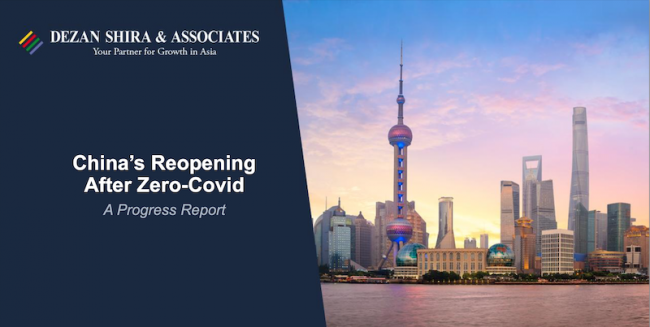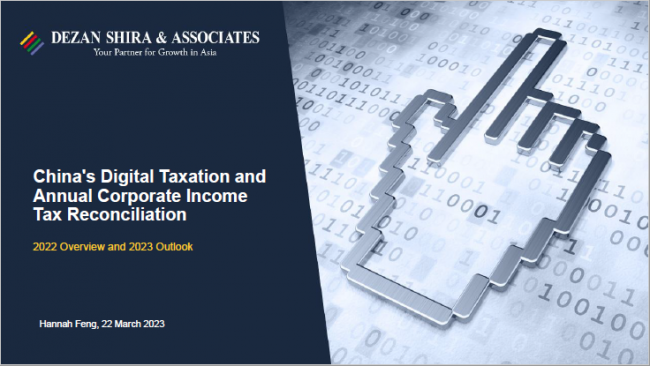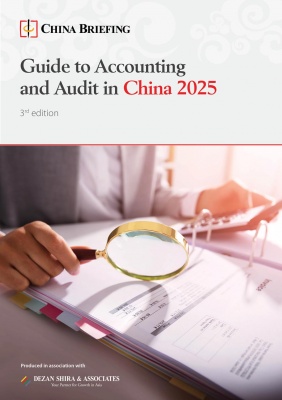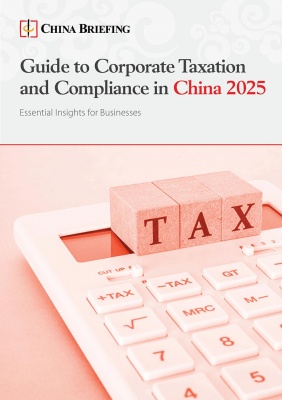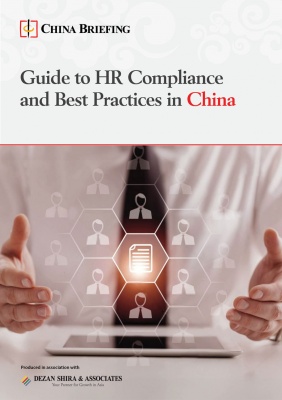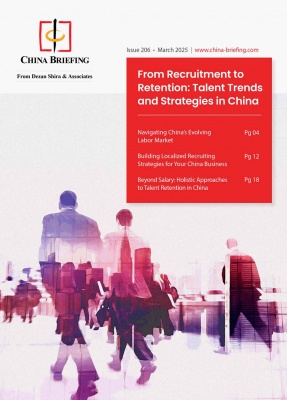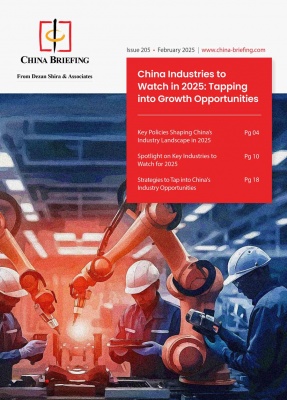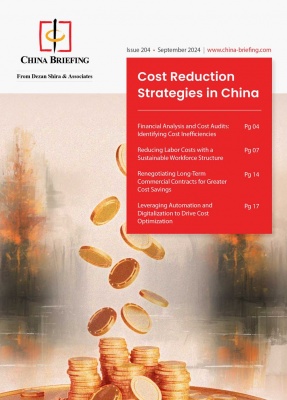Hong Kong Abolishes MPF Offsetting: What Employers Need to Know
From May 1, 2025, Hong Kong employers will no longer be able to offset severance payments (SP) and long service payments (LSP) using Mandatory Provident Fund (MPF) contributions, following the Abolition of the MPF Offsetting Arrangement. Businesses should be well prepared, including managing financial impact, allocating adequate resources, and navigating government subsidies effectively.
Hong Kong’s MPF system was established in the year 2000, and from its inception, the MPF Offsetting Arrangement has allowed employers to use their mandatory MPF contributions to offset SP and LSP owed to employees upon termination.
However, starting May 1, 2025, the Hong Kong government will implement the Abolition of the MPF Offsetting Arrangement, marking a major shift in employment and retirement policies. This reform aims to strengthen retirement protection for employees while aligning Hong Kong’s employment practices with international standards.
With this change, businesses must reassess their financial planning, update HR policies, and ensure compliance with the new regulations. This article provides an overview of the abolition, its impact on employers, and key steps businesses should take to prepare effectively for the transition.
What is the Abolition of the MPF Offsetting Arrangement in Hong Kong?
On June 9, 2022, Hong Kong’s Legislative Council passed the Employment and Retirement Schemes Legislation (Offsetting Arrangement) (Amendment) Bill 2022, officially abolishing the use of employers’ mandatory MPF contributions to offset their SP and LSP owed to employees upon termination. The abolition will take effect on May 1, 2025.
Key changes under the abolition
- Effective May 1, 2025 (the “transition date”), employers can no longer use the accrued benefits from their mandatory MPF contributions to offset employees’ SP/LSP.
- Employers can still use accrued benefits from voluntary MPF contributions and gratuities based on length of service to offset SP/LSP.
- To prevent large-scale dismissals before the transition date, a “grandfathering” arrangement applies to employees hired before the transition date.
Grandfathering arrangement for pre-transition SP/LSP
Under the Abolition of the MPF Offsetting Arrangement, some employers may consider dismissing their existing employees immediately before the transition date and hiring new staff afterwards to make use of the employer’s mandatory MPF contributions to offset the employees’ SP/LSP. To reduce such risks, the Hong Kong Government put in place the below “grandfathering” arrangement for the pre-transition of SP/LSP of employees who were already in employment before the transition date:
- Employers may continue to use accrued MPF contributions (mandatory or voluntary, made before or after the transition date) to offset the pre-transition portion of an employee’s SP/LSP.
- The pre-transition SP/LSP is calculated based on the monthly wages immediately before the transition date and years of service before May 1, 2025.
- Any SP/LSP accrued after the transition date cannot be offset using mandatory MPF contributions.
This major policy change strengthens retirement protection for employees while ensuring employers plan ahead for compliance and financial adjustments.
Why employers should not dismiss employees before the transition date
Some employers may consider terminating existing employees before the implementation of the Abolition of MPF Offsetting Arrangement (i.e., the transition date: May 1, 2025) and hiring new staff afterward, believing this could reduce their SP or LSP liabilities. However, this approach does not result in cost savings due to the following reasons:
No SP/LSP savings for early dismissals
- Employers can still use the accrued benefits of their MPF contributions to offset the pre-transition portion of SP/LSP for existing employees.
- The pre-transition portion of an existing employee’s SP/LSP is fixed based on the employee’s wages immediately before the transition date and the years of service before the transition date. Therefore, any salary increases or continued employment after the transition date do not affect the pre-transition SP/LSP amount.
Early dismissals may increase employer costs
In fact, dismissing employees before the transition date may result in higher SP/LSP costs due to:
- The employer’s MPF contributions, which can offset the pre-transition portion of SP/LSP, account for the employee’s entire service period. Retaining employees allows the accrued MPF benefits to grow, increasing the potential offset amount.
- New employees hired after the transition date will accumulate SP/LSP from scratch, up to a maximum of HK$390,000, and none of it can be offset using the employer’s mandatory MPF contributions.
In conclusion, employers should not rush to dismiss employees before May 1, 2025, as it will not lead to SP/LSP savings. Instead, keeping existing employees helps maximize MPF offsets and avoid unnecessary financial burdens from new SP/LSP accruals.
The calculation of SP/LSP after the Abolition of the MPF Offsetting Arrangement
Understanding the calculation method for SP and LSP is essential for implementing the MPF Offsetting Abolition policy. Below are the calculation methods and the corresponding offsetting arrangements for employees based on their employment start date.
Employees whose employment commences on or after the transition date (May 1, 2025)
Calculation of SP/ LSP:
| Employee Type | Calculation Formula |
| Monthly-paid employee | (last full month’s wages* before termination of employment × 2/3)** × years of service |
| Daily-rated/piece-rated employee | (any 18 days’ wages* chosen by the employee out of his/her last 30 normal working days before termination of employment) # × years of service |
| * An employee may also elect to use his/her average wages in the 12 months immediately preceding the termination of employment for the calculation.
**The sum should not exceed 2/3 of HK$22,500 (i.e., HK$15,000). The maximum amount of SP/LSP is HK$390,000. |
|
Offsetting arrangement:
| Accrued Benefits Derived From | SP/LSP Offsetable? (Y/N) |
| Employer’s mandatory MPF contributions | No |
| Employer’s voluntary MPF contributions | Yes |
| Gratuities based on employees’ years of service | Yes |
Employees whose employment commences before the transition date
Calculation of SP/ LSP:
For employees hired before the transition date, SP/LSP is divided into pre-transition and post-transition portions:
| Pre-transition portion of SP/LSP | Post-transition portion of SP/LSP | |
| Monthly-paid employee | (last full month’s wages* immediately preceding the transition date × 2/3)** × years of service before the transition date | (last full month’s wages* before termination of employment × 2/3)** × years of service starting from the transition date |
| Daily-rated/piece-rated employee | (any 18 days’ wages* chosen by the employee out of his/her last 30 normal working days immediately preceding the transition date) # × years of service before the transition date | (any 18 days’ wages* chosen by the employee out of his/her last 30 normal working days before termination of employment) # × years of service starting from the transition date |
| *An employee may also elect to use his/her average wages in the 12 months immediately preceding the transition date/ termination of employment for the calculation.
**The sum should not exceed 2/3 of HK$22,500 (i.e., HK$15,000). The maximum amount of SP/LSP is HK$390,000. If an employee’s total SP/LSP (i.e., the sum of pre- and post-transition portions of SP/LSP) exceeds HK$390,000, the amount in excess will be deducted from the post-transition portion. |
||
Offsetting arrangement:
| Accrued Benefits Derived From | Pre-transition portion of SP/LSP Offsettable? | Post-transition portion of SP/LSP Offsettable? |
| Employer’s mandatory MPF contributions | Yes | No |
| Employer’s voluntary MPF contributions | Yes | Yes |
| Gratuities based on employees’ years of service | Yes | Yes |
Case study
Scenario:
Company A, a Hong Kong-based entity, employed Mr. Lee on May 1, 2020. Company A plans to dismiss Mr. Lee, with his last day of employment set for April 30, 2029. Mr. Lee is entitled to LSP under the new MPF offsetting rules.
Mr. Lee’s monthly wage for April 2025 is HK$15,000, and the last full month’s wages before termination (April 2029) is HK$18,000. The accrued benefits derived from the employer’s mandatory MPF contributions are HK$88,200, and there are no employer’s voluntary MPF contributions or gratuities.
LSP calculation:
| LSP Component | Formula | Amount (HK$) |
| Pre-transition portion (May 1, 2020 – April 30, 2025) | 15,000 × 2/3 × 5 years | 50,000 |
| Post-transition portion (May 1, 2025 – April 30, 2029) | 18,000 × 2/3 × 4 years | 48,000 |
| Total LSP entitlement | 98,000 | |
Offsetting arrangement:
| LSP Component | Amount (HK$) |
| Pre-transition portion of LSP (offsetable using employer’s mandatory MPF contributions) | 50,000 |
| Employer’s mandatory MPF contributions withdrawn to offset LSP* | 50,000 |
| Post-transition portion of LSP (payable by Company A) | 48,000 |
| Employer’s remaining mandatory MPF contributions (retained in Mr. Lee’s MPF account) | 38,200 (HK$88,200 – HK$50,000) |
| * If Company A has already paid LSP to Mr. Lee, the amount offset will be reimbursed to the company from the MPF account. | |
Subsidy scheme for Abolition of MPF Offsetting Arrangement
The Abolition of MPF Offsetting Arrangement policy will protect the retirement benefits of the employees in Hong Kong. However, it also increases the employers’ financial burden for the post-transition portion of SP/LSP.
To help employers gradually adapt to this new policy, the Hong Kong Government has introduced a 25-year subsidy scheme totaling over HK$33 billion (at 2021 prices). The scheme will partially cover employers’ SP/LSP expenses for the post-transition period.
Key features of the subsidy scheme
Employers will share SP/LSP expenses with the Government based on a specified ratio each year, and two different subsidy structures apply:
- For cases where the employer’s year-to-date accumulated expenses of SP/LSP fall within HK$500,000, there will be a “capped amount” per case in respect of the SP/LSP payable by an employer for the initial nine years. If the shared amount payable by an employer calculated according to the share ratio exceeds the “capped amount”, the employer only needs to pay the “capped amount”. The remaining amount of SP/LSP will be subsidized by the Government.
- For cases where the employer’s year-to-date accumulated expenses of SP/LSP go beyond HK$500,000, the amount payable by an employer to such cases is calculated according to the share ratio with no “capped amount”. The remaining amount of SP/LSP will be subsidized by the Government.
Cases falling within the HK$500,000 threshold
For cases falling within the HK$500,000 threshold, please refer to Table 1 below for the employer’s share ratio / “capped amount” in respect of the post-transition portion of SP/LSP per employee. The remaining post-transition portion of SP/LSP will be subsidized by the Government.
| Table 1: Cases Falling within the HK$500,000 Threshold | |
| Years after the abolition | Employer’s share ratio / capped amount |
| 1-3 | 50% or HK$3,000(whichever is the lower) |
| 4 | 55% or HK$25,000(whichever is the lower) |
| 5 | 60% or HK$25,000(whichever is the lower) |
| 6 | 65% or HK$25,000(whichever is the lower) |
| 7 | 70% or HK$50,000(whichever is the lower) |
| 8 | 75% or HK$50,000(whichever is the lower) |
| 9 | 80% or HK$50,000(whichever is the lower) |
| 10-11 | 80% |
| 12-13 | 85% |
| 14-19 | 90% |
| 20-25 | 95% |
Cases beyond the HK$500,000 threshold
For cases beyond the HK$500,000 threshold, please refer to Table 2 below for the employer’s share ratio with respect to the post-transition portion of SP/LSP per employee. For the initial 12 years after the abolition, the remaining amount of post-transition portion of SP/LSP will be subsidized by the Government. From Year 13 onwards, no Government subsidy will be provided.
| Table 2: Cases beyond the HK$500,000 Threshold | |
| Years after the abolition | Employer’s share ratio |
| 1-3 | 50% |
| 4 | 55% |
| 5 | 60% |
| 6 | 65% |
| 7 | 70% |
| 8 | 75% |
| 9 | 80% |
| 10 | 85% |
| 11 | 90% |
| 12 | 95% |
| 13-25 | 100% (no subsidy) |
Cases straddling the HK$500,000 threshold
For cases straddling the HK$500,000 threshold, where part of the SP/LSP paid by an employer to an employee exceed HK$500,000 (an example can be found in the case study below – Scenario III), the SP/LSP expenses within the HK$500,000 threshold will be calculated according to the higher subsidy ratio in Table 1, with “capped amount” calculated on a pro rata basis, whilst the remaining part exceeding the HK$500,000 threshold will be calculated according to the lower subsidy ratio in Table 2.
Case study
Take Mr. Lee’s case for example; his last employment date falls into the 4th year after the abolition, and the post-transition portion of LSP is HK$48,000. Let’s assume his case will fall under the below three scenarios (based on the employer’s accumulated SP/LSP expenses in the year):
- Scenario I: In the 4th year after the abolition, Company A’s accumulated amount of post-transition portion of SP/LSP (for other employees) paid before Mr. Lee’s case is HK$100,000. Then, Mr. Lee’s case will fall within the HK$500,000 threshold.
- Scenario II: In the 4th year after the abolition, Company A’s accumulated amount of post-transition portion of SP/LSP (for other employees) paid before Mr. Lee’s case is HK$500,000. Then, Mr. Lee’s case will fall beyond the HK$500,000 threshold.
- Scenario III: In the 4th year after the abolition, Company A’s accumulated amount of post-transition portion of SP/LSP (for other employees) paid before Mr. Lee’s case is HK$470,000. Then, Mr. Lee’s case will straddle the HK$500,000 threshold. In this case, HK$30,000 will fall within the HK$500,000 threshold, and the remaining HK$18,000 will go beyond the threshold.
Please find the summary below for the calculation of Company A’s shared amounts of the post-transition portion of LSP and the Government’s subsidy amounts under the above three scenarios:
| Scenario | Post-transition portion | Shared Ratio | Shared Amount | Capped amount/Pro-rated Capped amount | Final Shared Amount | Government Subsidy | Reference Table |
| (A) | (B) | (C)=(A) x (B) | (D) | (E)= MIN (C, D) | (F) = (A) – (E) | ||
| I | 48,000.00 | 55% | 26,400.00 | 25,000.00 | 25,000.00 | 23,000.00 | Table 1 |
| II | 48,000.00 | 55% | 26,400.00 | N/A | 26,400.00 | 21,600.00 | Table 2 |
| III | 30,000.00 | 55% | 16,500.00 | 15,625.00 | 25,525.00 | 22,475.00 | Table 1 |
| 18,000.00 | 55% | 9,900.00 | N/A | Table 2 | |||
Impact on SMEs
Given that nearly 90 percent of micro, small, and medium-sized enterprises (SMEs) have annual SP/LSP liabilities below HK$500,000. These businesses will benefit the most from the higher subsidies and capped amounts in Table 1 for each SP/LSP case, reducing their financial burden during the transition period.
Application of the Abolition of MPF Offsetting Arrangement
The Abolition of the Offsetting Arrangement will also apply to certain occupational retirement schemes under specific conditions. However, it does not apply to employees who are not covered by the MPF System or other statutory retirement schemes, including domestic helpers and employees aged less than 18 or over 65.
Since employers are not required to make mandatory MPF contributions for such employees, they will not be affected by the abolition. Their SP/LSP, if applicable, will continue to be calculated based on their last monthly wages or 12-month average wages before the termination, in line with the existing provisions of the Employment Ordinance.
Aggregate benefits received by employees after the abolition
For most employees, the total benefits (i.e., SP/LSP plus Employer’s Mandatory MPF contributions) to be received after the abolition will be higher than those under the current offsetting regime.
However, under special circumstances (e.g., a substantial pay rise after the transition date, long pre-transition employment period, short post-transition employment period), the total benefits after the abolition may be lower than those under the current offsetting regime.
To ensure employees do not lose out, the Hong Kong Government has committed to covering any shortfall should such cases arise.
Dezan Shira’s insights: How to prepare for the Abolition of MPF Offsetting Arrangement?
Dezan Shira recommends that employers in Hong Kong take proactive steps to prepare for the Abolition of MPF Offsetting Arrangement policy in advance. Proper preparation will help employers adapt smoothly and remain compliant with the new policy:
- Financial planning: The abolition of the MPF offsetting arrangement will increase employers’ financial burden, as they will no longer be able to use mandatory MPF contributions to offset the post-transition portion of SP/LSP. Employers should assess the financial impact and allocate sufficient funds to cover future SP/LSP expenses.
- HR document review: Many employment contracts and employee handbooks may contain MPF offsetting clauses. Employers should review and revise these documents to ensure they align with the new policy.
- Employee communication: Employers should educate employees about the abolition policy and its benefits. It is especially important to inform employees about the government’s shortfall compensation mechanism in cases where their total benefits after the abolition may be lower than under the previous offsetting system.
- Government subsidy application: As part of the transition, the Hong Kong Government will provide a subsidy scheme to assist employers. However, this subsidy is reimbursement-based, meaning employers must first pay SP/LSP to employees in accordance with the Employment Ordinance before applying for reimbursement. Employers should familiarize themselves with the application process, prepare the necessary documentation, and ensure timely submissions to facilitate subsidy approval and disbursement.
- Keeping wage records: To calculate the pre-transition portion of SP/LSP, employers must maintain wage records covering an employee’s 12-month employment period immediately before the transition date and six months after the employee leaves. This is in addition to the existing record-keeping requirements under the Employment Ordinance.
- Allocating sufficient resources: The policy change will increase administrative workloads for HR and finance teams. Employers should allocate sufficient personnel and resources to manage the transition effectively.
- Seeking professional advice: The Abolition of the MPF Offsetting Arrangement will take effect on May 1, 2025. Seeking professional advice can help businesses adapt efficiently and stay compliant.
With three decades of experience in Asia, Dezan Shira’s HR and payroll team has extensive expertise in local markets. Our certified HR and payroll specialists offer practical, compliant, and efficient solutions to help businesses navigate MPF offsetting changes. If you need assistance, please contact China@dezshira.com.
About Us
China Briefing is one of five regional Asia Briefing publications, supported by Dezan Shira & Associates. For a complimentary subscription to China Briefing’s content products, please click here.
Dezan Shira & Associates assists foreign investors into China and has done so since 1992 through offices in Beijing, Tianjin, Dalian, Qingdao, Shanghai, Hangzhou, Ningbo, Suzhou, Guangzhou, Haikou, Zhongshan, Shenzhen, and Hong Kong. We also have offices in Vietnam, Indonesia, Singapore, United States, Germany, Italy, India, and Dubai (UAE) and partner firms assisting foreign investors in The Philippines, Malaysia, Thailand, Bangladesh, and Australia. For assistance in China, please contact the firm at china@dezshira.com or visit our website at www.dezshira.com.
- Previous Article China’s Cybersecurity Law Amendments: Key Changes in the Second Draft
- Next Article Trump Raises Tariffs on China to 54% – Overview and Trade Implications








